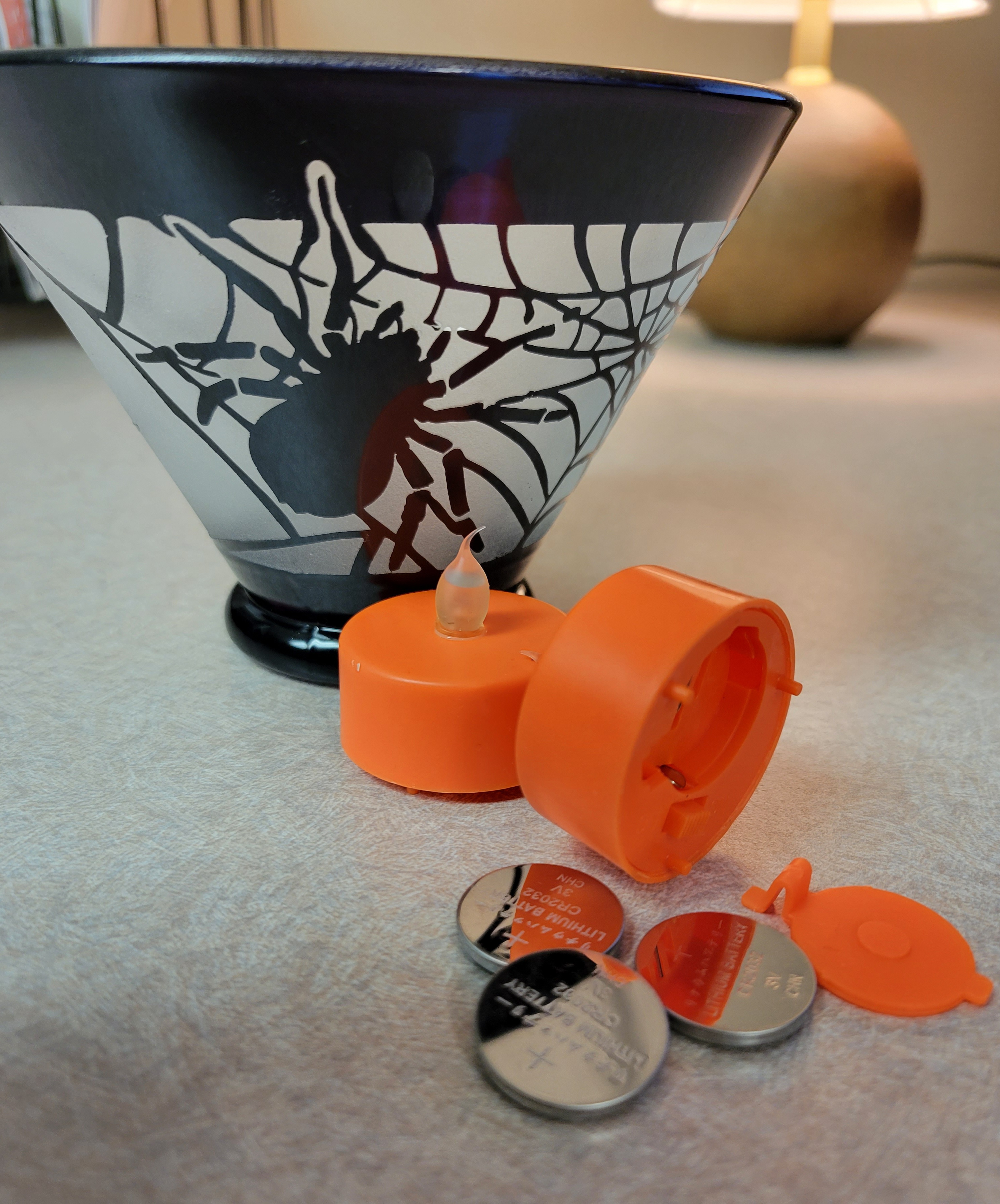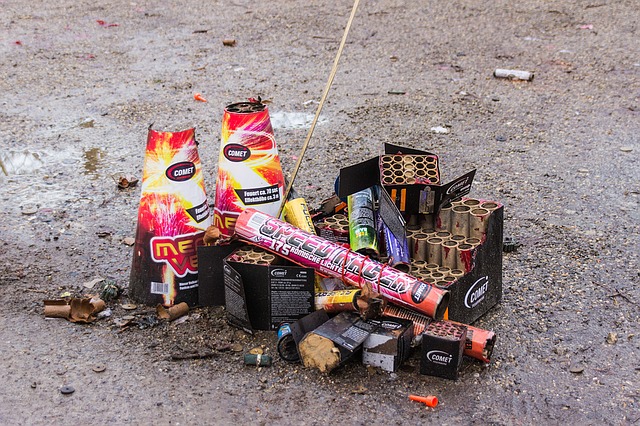-
Fall

During fall festivals and Halloween there are plenty of distractions from our regular routines. Many poisonings occur when there is a distraction in the home, products are not stored properly, or accidental exposures occurs.
Halloween Treats
- Check all treats before your child eats them. Tell your child why doing this is important.
- Make sure your child eats treats ONLY if they are in their original, unopened wrapper from the store.
- Throw away candy if wrappers are faded, have holes or tears, or if the candy has been unwrapped. Check fruit and homemade treats to make sure they are safe to eat.
- Allow your child to eat homemade items only from someone you know and trust offered them.
- Chocolate can be poisonous to pets. Consider giving non-edible treats such as stickers, toys or pencils.
Glow Sticks
Glow sticks, light sticks and other objects that glow sometimes break. The active ingredient, dibutyl phthalate, in small amounts is safe.
- If an exposure occurs, wash off the skin with soap and water.
- Swallowing a small amount is minimally toxic, causing only minor mouth or throat irritation. However, these chemicals can cause nausea and a burning feeling in the mouth and throat.
- If splashed into the eyes, the liquid can cause burning and eye injury.
- Rinse your eyes with running water for 15 to 20 minutes.
- Call the Poison Helpline with questions.
Halloween Makeup
- Some makeup products can cause mild to serious problems. When choosing Halloween makeup, look for makeup that is not poisonous (non-toxic).
- Wash skin with soap and water right away if a rash or other changes in the skin develop.
- Symptoms that could be expected from an allergy or sensitivity to a makeup product commonly include: swollen skin, small bumps on the skin, and itching.
- If any makeup is swallowed, treatment depends on the amount ingested, ingredients, and symptoms.
Dry Ice
- When swallowed, oral burns (actually tissue destruction from freezing) may occur. Immediate dilution is recommended.Â
- Having dry ice in punch is not a problem as long as not ice is swallowed. Direct contact with the skin can also cause tissue damage.
- Wash skin immediately with lukewarm water. If exposure occurs, call the poison center.
-
Winter
Holiday Safety
During the Holidays there are plenty of distractions from our regular routines. Many poisonings occur when there is a distraction in the home, or when products are not stored properly. A perfect example and source of many calls to the Poison Helpline during December is regarding medications in travel bags.
Remember when you have guests in your home to provide a safe location for them to store travel bags, diaper bags and purses. A visitor's bag may contain prescription drugs that can be harmful or fatal to small children.
Common calls to the Poison Center during the winter include:
Ice Melt Products
- Ice melting products commonly contain sodium chloride (rock salt), calcium chloride, potassium chlorides and a number of other chemicals depending on the brand.
- If swallowed, these products can be irritating can cause stomach issues.
- Pets may develop vomiting or seizures if these products are swallowed. Be sure to wipe off their paws if they walk through ice melt as ice melt products cause irritation to their paws.
- Store these products up and away with other poisons. Keep them out of reach and in a locked cabinet.
Antifreeze
- Antifreeze is a liquid with a sweet taste may appeal to children and animals.
- Swallowing a small amount can be harmful. It can cause kidney damage and death.
- Keep antifreeze and all chemicals in their original containers. Cap them tightly.
- Store in a locked cabinet.
- Before throwing away an antifreeze container, rinse it with water. Replace the safety cap. Place the container in the trash.
Carbon Monoxide (CO)
Carbon Monoxide is a poisonous gas with no color, odor, or taste. All fuel-burning devices make CO. CO can collect in closed areas when the devices are not working properly or are not used in a ventilated space.
Sources of carbon monoxide
- Gas furnaces
- Gas water heaters
- Wood and gas stoves
- Gas ovens
- Kerosene space heaters
- Wood and gas fireplaces
- Power generators
- Car engines and vehicle exhaust leaks
Symptoms of carbon monoxide poisoning are similar to the flu
- Headaches
- Sleepiness
- Nausea
- Vomiting
- Dizziness
- Confusion
Preventing carbon monoxide poisoning in your home
- Have at least one CO alarm in your home. The best places for a CO alarm are near bedrooms and close to furnaces. Periodically check to see if the batteries need to be replaced.
- Have your heating system, vents, and chimney checked every year by experts.
- Always follow product instructions for installing and repairing appliances that burn fuel.
- Never burn charcoal inside a house or garage.
- Never use a gas oven to heat a house or apartment.
- Never use unvented fuel-burning devices in a house or apartment.
- Never run a car in a closed garage.

Cough and Cold Medications
Winter means cough and cold season; therefore, medications may be more available in the home than at other times of the year. Children are attracted to products that are flavored to taste good or resemble candy or beverages. Be sure you are not using two or more products with the same ingredients, particularly Acetaminophen. Call with questions if you are not sure how much cough or cold medication to give or how to use multiple products.
Mercury Thermometers
Avoid using glass mercury thermometers. A glass thermometer can break in a child's mouth. The mercury in thermometers is not absorbed into the blood system, so cuts in the mouth are the only concern.Use a digital thermometer to avoid the risk of breaking glass. Stay with children when taking their temperature.
- Mercury is a hazardous waste and spilled mercury should be cleaned up properly.
- Remember to not discard a mercury thermometer in your regular trash.
- Call the Poison Center for advice on a mercury clean up.
- Avoid using glass mercury thermometers.
-
Spring
During the spring we often see an increase in calls to the Poison Helpline from outdoor exposures and household chemicals. Many poisonings occur when there is a distraction in the home, products are not stored properly, or accidental exposures occurs. Call the Poison Helpline right away with your questions about pesticides and chemicals.
Pesticides
- Pesticides can be absorbed through the skin or inhaled. Pesticides can be extremely poisonous.
- Stay away from areas that have been sprayed until the spray has dried or for at least one hour.
- Wear protective clothing when using bug spray or other spray products, including a long-sleeve shirt, long pants, socks, shoes, and gloves. Remove and wash clothing and gloves after using chemicals.
- If pesticides are splashed onto the skin or eyes, rinse with lukewarm water for 15-20 minutes.
- Remove clothing before rinsing skin if pesticides contacted clothing.
- Many garden chemicals are poisonous to children and adults if swallowed or inhaled.
- Store them in their original container away from children.
- Fertilizer dust and particles may irritate eyes. Flush the exposed eye with water for 15 minutes.
- Keep children and animals out of the area when using fertilizer.
- Fertilizers can cause nausea, vomiting, and diarrhea if eaten.
Mushrooms. Only experts can tell poisonous mushrooms from safe mushrooms. Eating even a few bites of certain mushrooms can cause liver damage and death. Never eat a mushroom unless it has been positively identified and verified as edible. Your first bite could be your last. Don't assume a mushroom is safe to eat because animals eat it or because of the area where it grows. Edible and poisonous mushrooms can be found growing side by side in the same area.
- Poisonous mushrooms often grow in yards and parks.
- Mushrooms in parks, home lawns and near water dumps may be contaminated with pesticides or other poisons.
- Cooking does not make a mushroom safe to eat.
- ALL wild mushrooms ingested by children should be considered potentially dangerous. If your child eats a wild mushroom, contact the Poison Control Center immediately.
- If a child needs to go to the hospital, take a sample of the mushroom with you for identification and analysis.
- Save specimens in the refrigerator; do not freeze. Place the mushroom in a paper bag, not a plastic bag.
Plants & Berries Berries are often poisonous and children are very attracted to them. They may think these berries are just like the fruits at the market.
- Experts may not be able to identify the plant on the phone.
- Before a poisoning occurs, learn the names of plants around your home.
- We may be able to identify the plant or berry if you can email us a picture.
- A person at a greenhouse or plant nursery can help you identify the plant.
Easter Egg Dyes
When buying materials for dyeing eggs, choose those labeled NON-TOXIC. Children often mistake the colored tablets for candy. Always supervise children when dyeing eggs.
-
Summer
Insect bites/stings. Be alert to insects that may bite or sting. After a sting, the site will show redness and swelling. It may be itchy and painful. Be careful around bees, wasps, hornets, and yellow jackets. Some people are allergic to insect stings. To these people, a sting may cause serious problems and even death. Go to a hospital right away if you are stung and have any of these signs: hives, dizziness, breathing trouble, or swelling around eyes and mouth.
Insect repellant
- Be sure to check the label on any insect repellent.
- Most contain DEET, which can harm children if used improperly or in large amounts.
- Do not allow children to apply repellent to themselves.
- When using repellent on a child, put a little on your own hands, then rub them on your child.
- Avoid the eyes and mouth.
- Use separate products when there is a need for insect spray and sunscreen.
- Do not use sunscreen that contains DEET.
- Repeatedly applying a product with DEET can increase the risk of harmful effects.
- Always follow the instructions on the label.
- For most products, after returning indoors, wash treated skin with soap and water.
- Call the Poison Helpline with your questions.
Petroleum products (Hydrocarbons). A wide range of products are made from petroleum, including gasoline, kerosene, charcoal lighter fluid, paint thinner, baby oil, torch and lamp oils, and furniture polish. Watch children very closely when these are being used.
- If petroleum products are swallowed, they can easily get into the lungs.
- The liquid coats the inside of the lungs, which can cause difficulty breathing, coughing, and other severe respiratory problems.
- Sometimes they also cause vomiting and drowsiness.
- Use camp stoves, grills, and generators outside. Do not use them inside buildings or tents.
- Call the Poison Center immediately before doing anything else if someone ingests a petroleum product.
- DO NOT try to force the person to vomit.
Pool Chemicals. Inhaling chlorine products can irritate the respiratory system. If you own a swimming pool, store pool chemicals in a safe and secure place out of the reach of children. Seek fresh air immediately when exposed.
- Store products in their original containers in a cool, dry and well-ventilated area out of the reach of children.
- Always add chemicals to the water; never add water to the chemicals.
- Never add chemicals to the water while someone is in the pool.
- Never mix different chemicals unless the label specifically instructs you to do so.
- Follow the label directions exactly regarding the use and disposal of chemicals.
Sunscreen
- Apply sunscreen 30 minutes before going outside and re-apply every two hours or after swimming.
- Sunscreens are less effective if used past the expiration date.
- Certain medications can make your skin burn much faster. Ask your pharmacist or call the poison center to see if this is a concern with your medicine.
- Apply sunscreen carefully to the face and rinse thoroughly if it gets in the eyes.
Glow sticks and Fireworks
- Glow sticks, light sticks and other objects that glow sometimes break. The active ingredient, dibutyl phthalate, in small amounts is safe.
- If an exposure occurs wash off the skin with soap and water.
- Swallowing a small amount is minimally toxic, causing only minor mouth or throat irritation but the chemicals can cause nausea and a burning feeling in the mouth and throat.
- If splashed into the eyes the liquid can cause burning and eye injury.
- Rinse your eyes with running water for 15 to 20 minutes.
- Do NOT use eye drops meant to get redness out of the eyes. Call the poison center after the eyes have been irrigated.
- Call the Poison Helpline with questions.
- Fireworks often come in packages that can look like candy to a child. Swallowing any amount of fireworks can be harmful.
- Burned or used fireworks may still contain chemicals such as potassium nitrate, white phosphorus, barium chlorate, and arsenic.
- All fireworks should be kept out of the reach of children and animals.

Seasonal Hazards
We've got you covered in all seasons. Our Specialists are here 24/7 with answers to your questions.